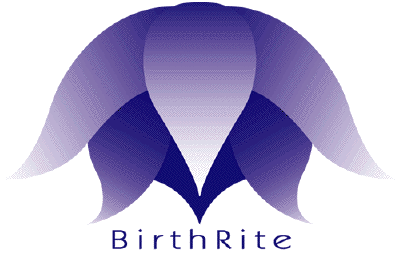In the following pages, BirthRite’s Director, Monika Boenigk, shares her philosophy of holistic midwifery and gives a taste of the enthusiasm for the subject that so many midwives have experienced in her workshops.

Far too often, couples approaching childbirth are channelled into a uniform restrictive process that fails to take cognisance of the totality of their individual circumstances. “Care” is equated with physical care, and carers respond to a couple’s concerns predominantly in the language of the mechanistic body.
In stark contrast, holistic practitioners respect the individuality of the people in their care. Their focus not only incorporates the important physical parameters of the pregnancy and birth but also extends beyond to encompass the psychological, emotional and social context in which they occur.
Moreover, there is no good reason why holistic midwifery cannot be mainstream and why mainstream midwifery cannot be holistic.

When holistic practitioners relate to a childbearing couple, they predominantly use the language of the mind and heart. They prepare the couple for the challenges of parenthood by involving them from the outset in a transparent, cooperative dialogue (“interactive engagement”) that genuinely recognizes their individual strengths and weaknesses. The holistic midwife works with the couple towards realizing their very best individual and combined potential.
In the holistic model of midwifery care, a couple is intimately involved in the whole process and learns to take responsibility for courses of action adopted — just as they will have to do once they are at home with their new family. Each partner is highly likely to emerge from the experience stronger and more mature, with a sense of having consciously and productively progressed through an important transition period in their lives. Their confidence as parents is greatly enhanced, and they are better prepared to raise their offspring to independence.
None of this diminishes the importance of good physical obstetric outcomes. It is just that holistic practitioners take a keen interest in other sorts of outcome as well.
Once they practise the holistic model of midwifery, midwives themselves discover a greater personal maturity and professional satisfaction.
The three pivotal elements of holistic midwifery in practice are:–
- interactive engagement of a single midwife with all of the woman’s internal forces — physical, psychological and emotional — throughout pregnancy and childbirth
- the invoking of relaxation as a powerful ally in labour
- upright positioning during childbirth whenever possible.
By definition, midwifery that is not socially and culturally sensitive is not holistic midwifery. In fact, the broad spectrum of practice and opportunity for creativity only serve to highlight the pragmatic, adaptable character of holistic midwifery.
While the principles of holistic midwifery can be implemented in almost any setting, some settings lend themselves to a fuller expression than others.
BirthRite offers an individualized Birth Environment Consultancy service which provides a comprehensive survey of the physical and psychological settings in which antenatal and birth-related activities take place. Areas of concern are identified and suggestions for improvement presented.
Birthing units regardless of size or stage of development may wish to avail themselves of this opportunity to assess their existing or proposed environment as it relates to the practice of holistic midwifery.
